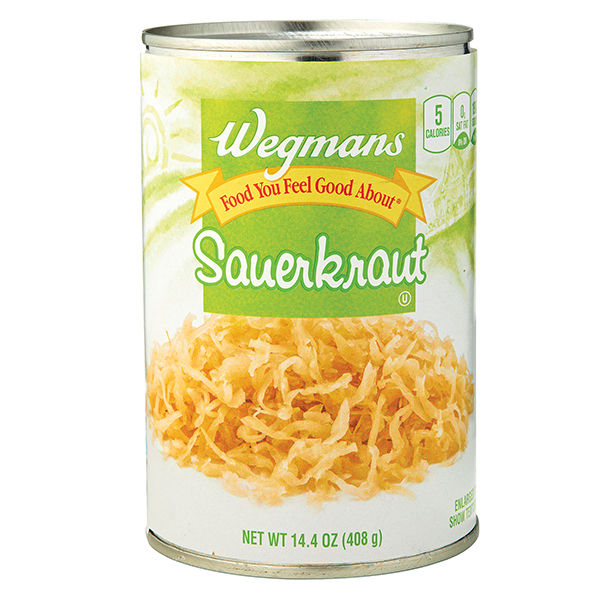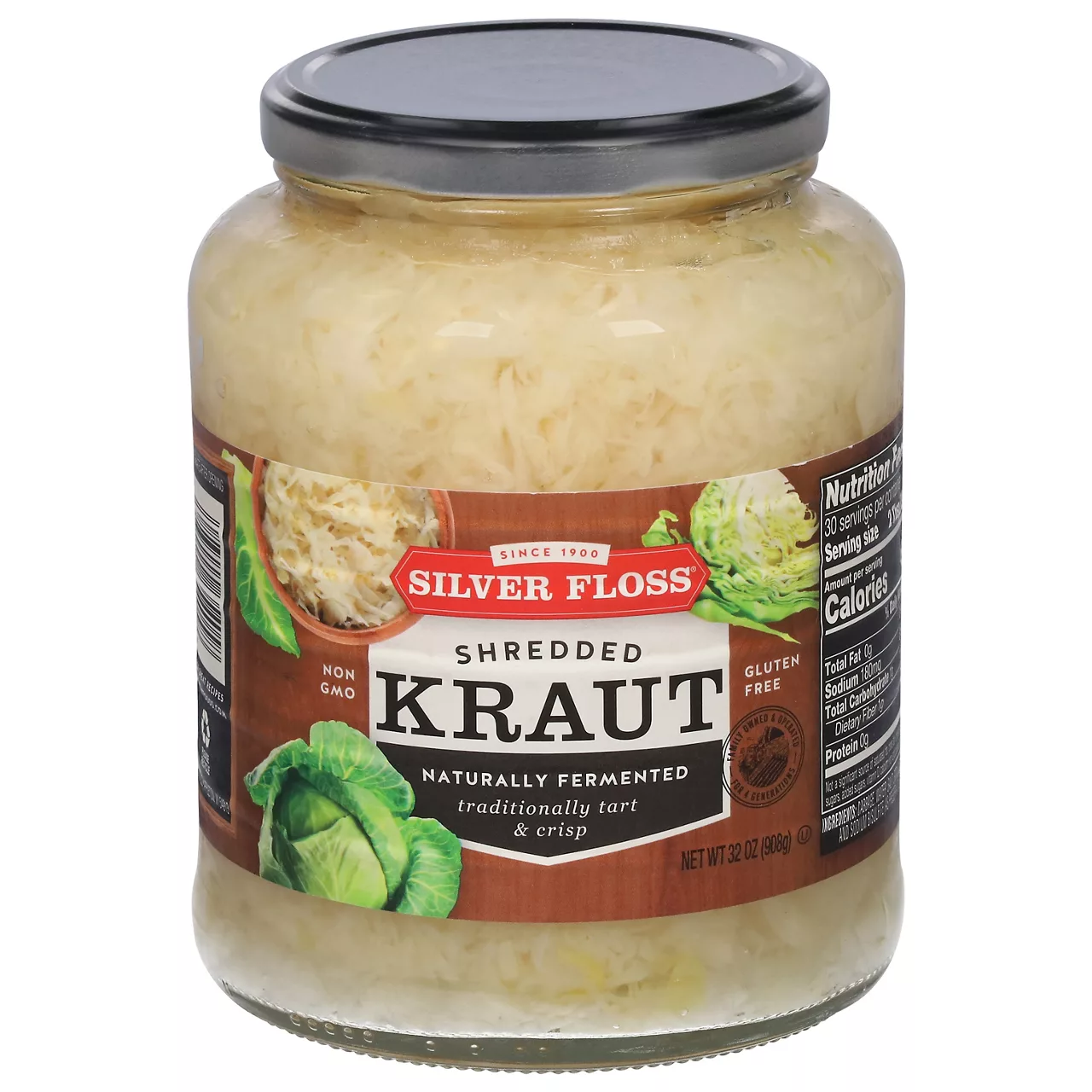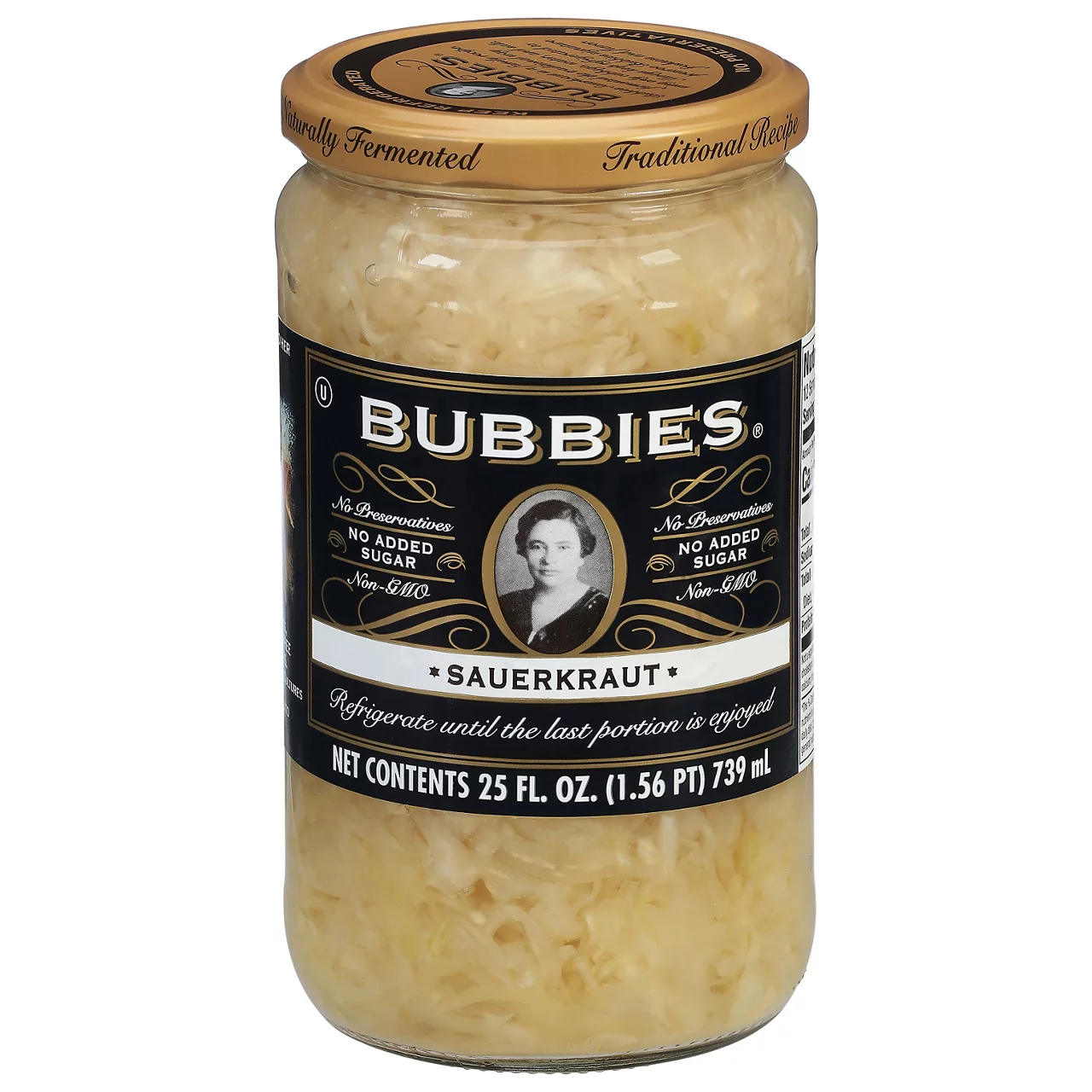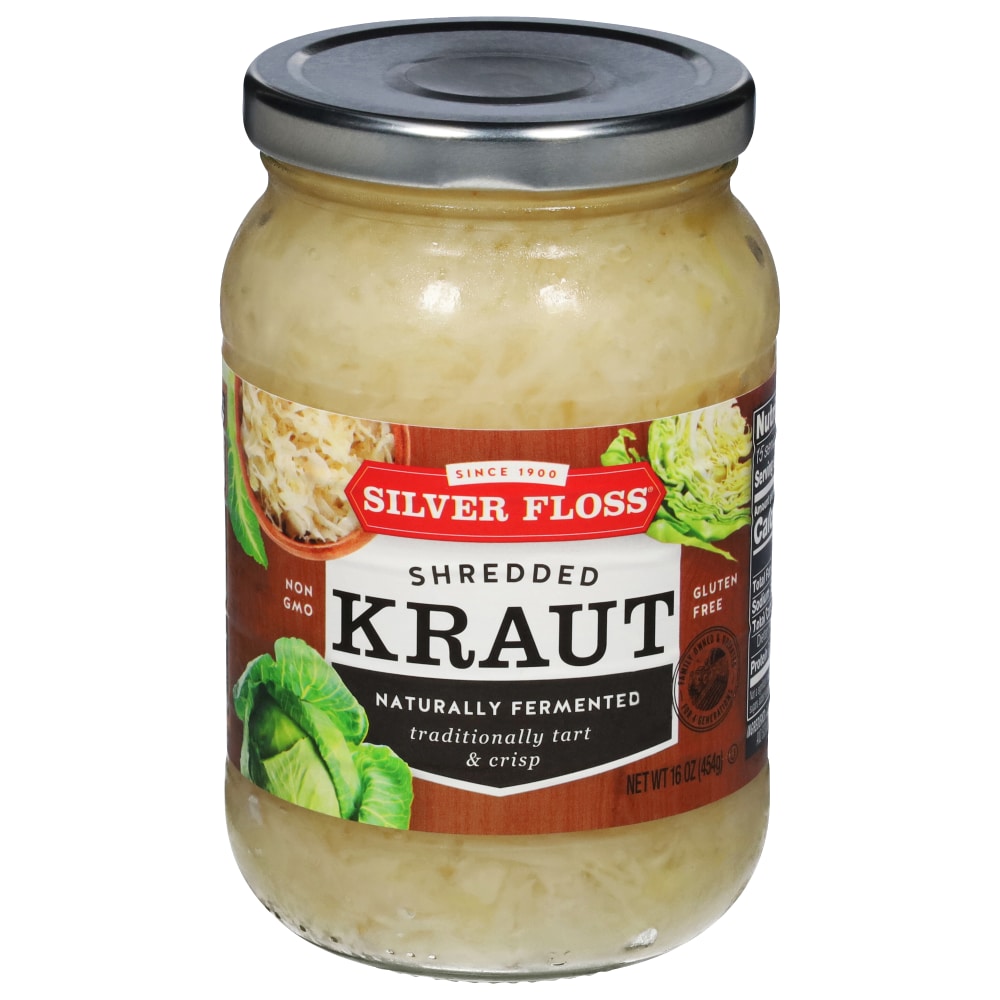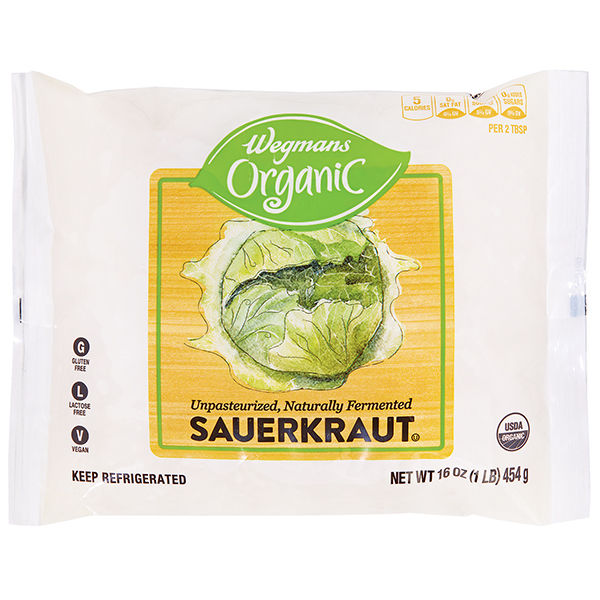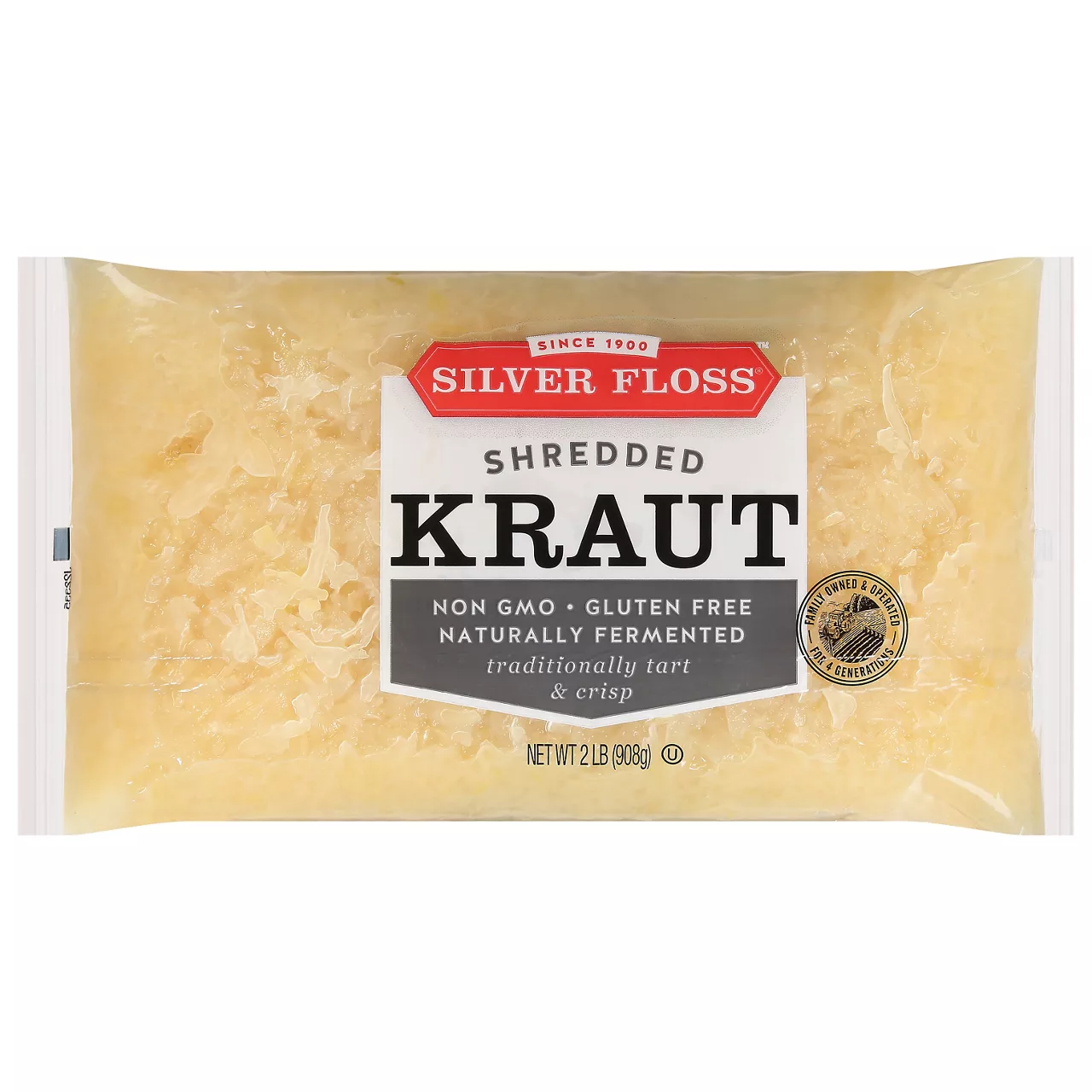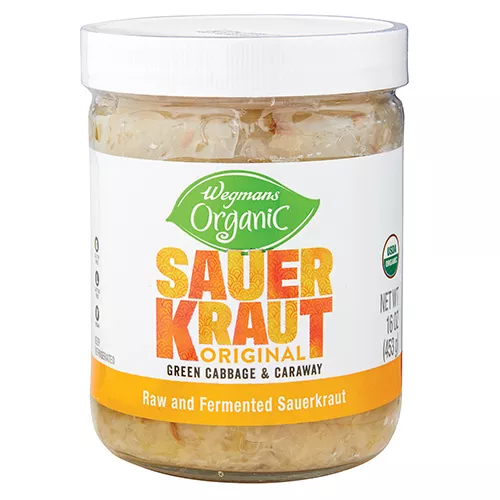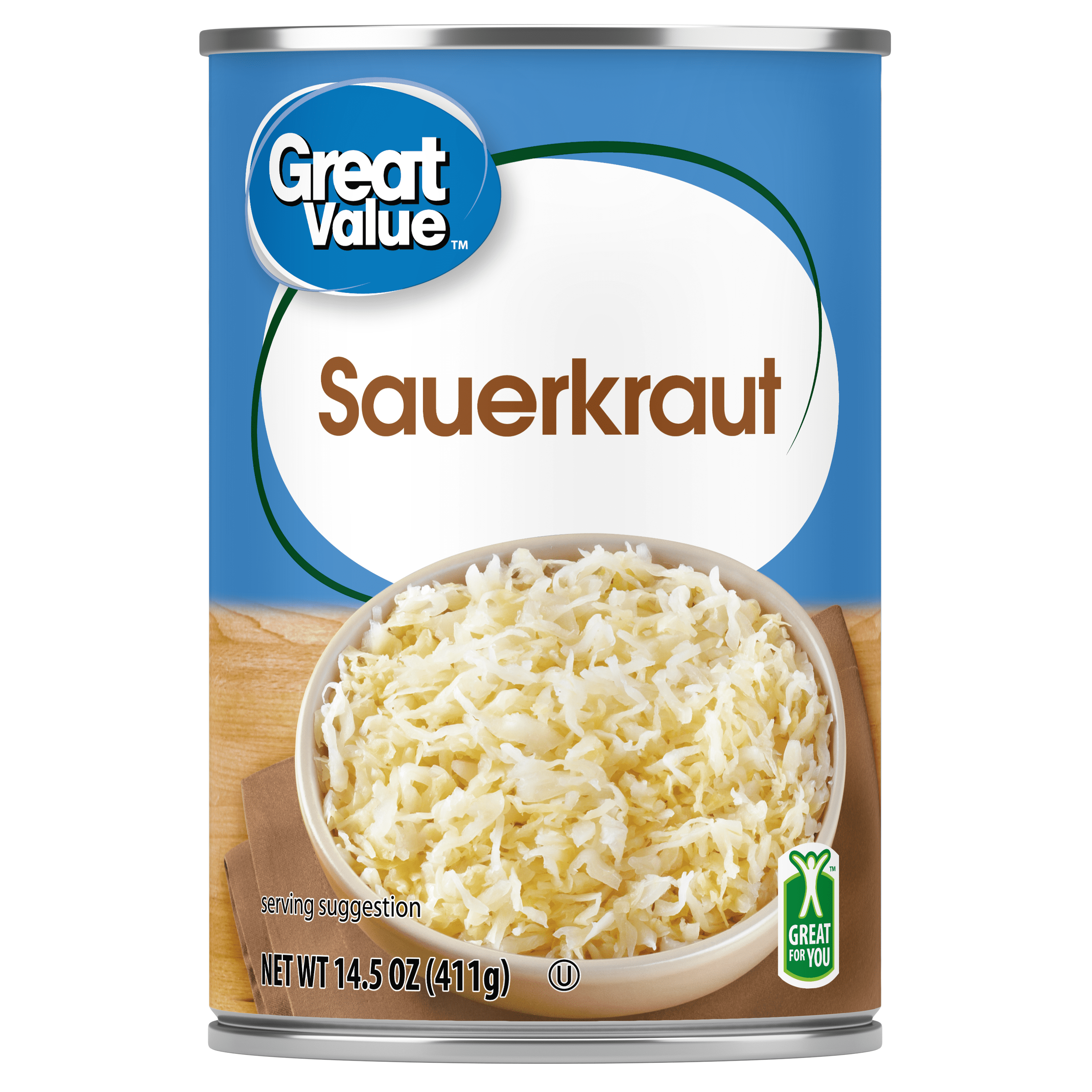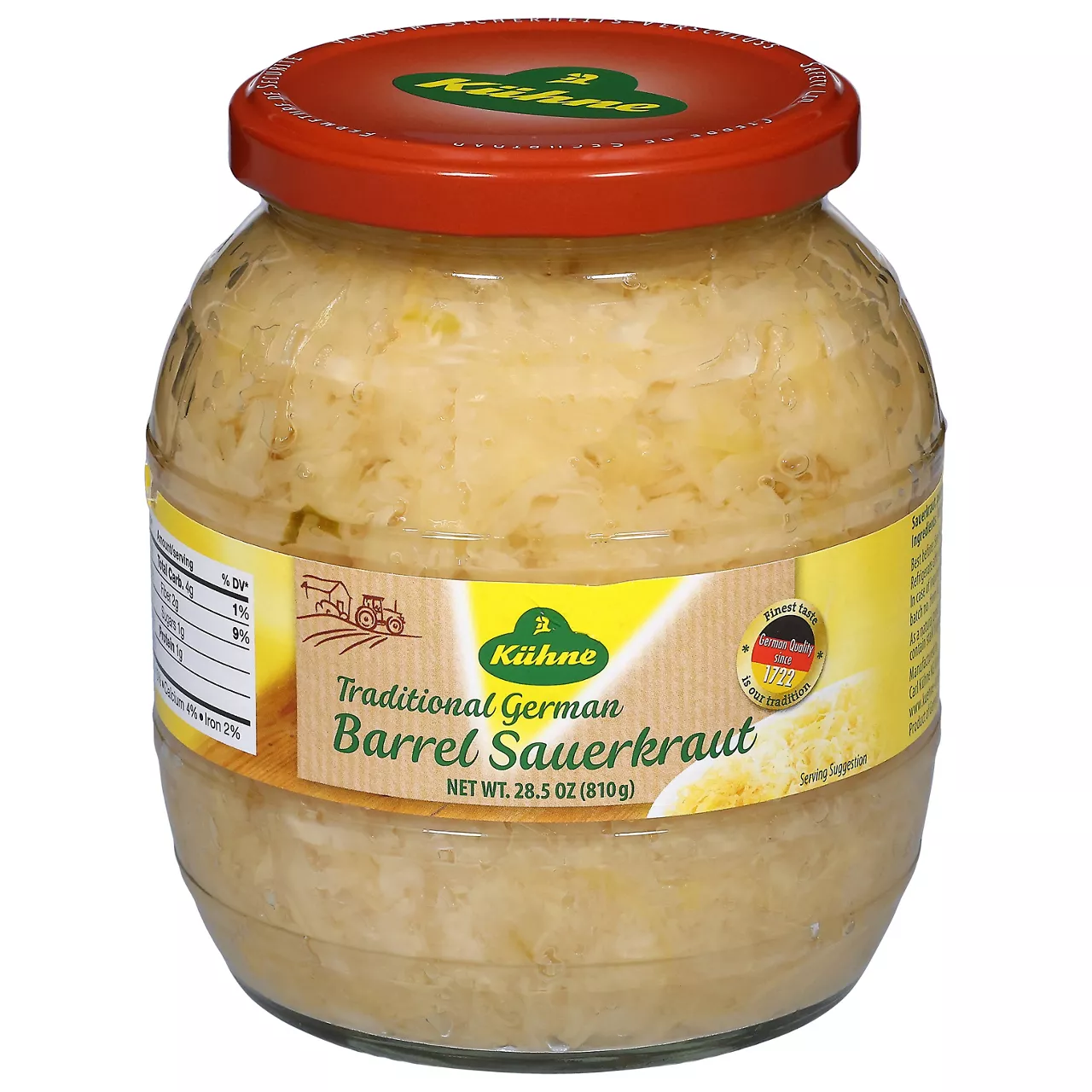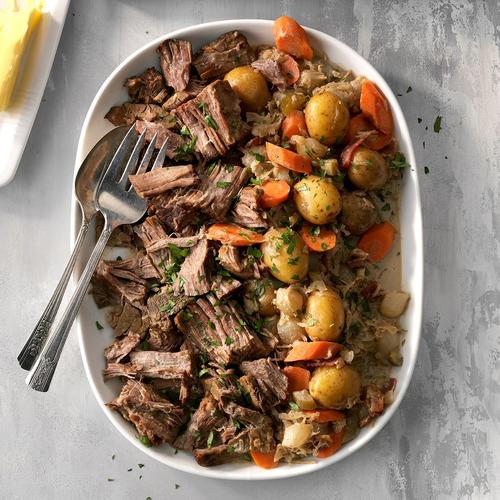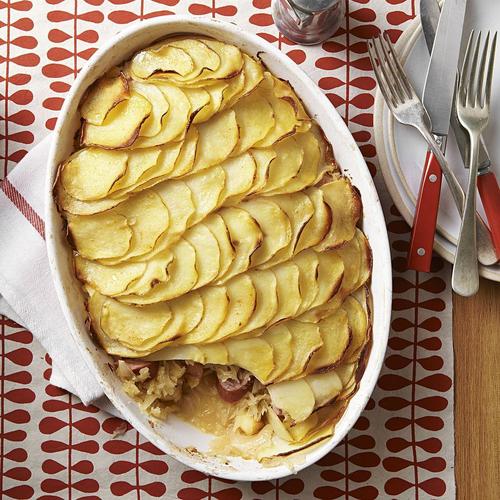CONDIMENTS AND SAUCES
SALADS
SOUPS
Sauerkraut
Sauerkraut is a popular fermented food made from finely sliced cabbage, which is naturally preserved through the process of lacto-fermentation. Originally from China and adopted by various European countries, it is packed with essential nutrients, particularly vitamins C and K, as well as probiotics, and is known for its tangy, sour flavor. This versatile condiment is an integral ingredient of the culinary traditions of Germany, Austria, and Eastern Europe.
Sauerkraut can be used in a wide range of recipes, consumed raw or cooked, and is often served as a side dish to sausages and other meats. It can also be added to sandwiches, stews, and casseroles to enhance their flavor profiles. Home cooks will appreciate sauerkraut's long shelf-life, which makes it a convenient addition to any pantry.
80%
CARBS
3%
FAT
17%
PROTEIN
884 Sauerkraut Products
Wegmans Sauerkraut
Silver Floss Naturally Fermented Shredded Sauerkraut
Bubbies Sauerkraut
Cleveland Kraut, Classic Caraway
Silver Floss Sauerkraut
Wegmans Organic Sauerkraut
Silver Floss Naturally Fermented Shredded Sauerkraut
Wegmans Organic Sauerkraut, Original
Great Value Sauerkraut
Kuhne Barrel Sauerkraut, Traditional German
1 Recipe for Sauerkraut
Used In 10 Recipes
Sauerkraut Is Frequently Used With
Sauerkraut FAQ
This tangy, sour fermented food is often misunderstood and underutilized. More than just a condiment, sauerkraut can truly elevate a dish when properly incorporated, bringing depth of flavor and a pleasing textural contrast. However, cooking with sauerkraut does present some challenges.
A typical mistake is using sauerkraut from a can or a jar straight from the shelf. These tend to have too much salt brine, which can overpower the dish. To balance this, it's recommended to rinse the sauerkraut and squeeze out any excess liquid before using. When you cook with sauerkraut, ensure to add it last if you desire to preserve the probiotic benefits as high heat may destroy the healthy bacteria.
To get the most out of sauerkraut, consider it as a versatile cooking ingredient rather than a simple condiment. Heating it can diminish its probiotic properties, but it’s not a requirement to eat sauerkraut raw, so feel free to experiment.
A less-known tip is to use the leftover brine from sauerkraut. It's flavorful and packed with beneficial bacteria. It can be used in salad dressings, marinades, or to kickstart other vegetable fermentation processes.
Can I use the juice from sauerkraut?
Is sauerkraut a vegetable?
Should I rinse sauerkraut before cooking?
How can I reduce the tanginess of sauerkraut?
Can I eat sauerkraut raw?
How do I cook with sauerkraut?
Does heat kill the probiotics in sauerkraut?
Is the brine from sauerkraut good for you?
Can I use sauerkraut in a salad?
Which dishes are best suited to add sauerkraut?
Expiration & Storage Tips
When does sauerkraut expire?
Unopened jars of commercial sauerkraut can last up to 18 months in the pantry, even beyond their printed best-before date provided they're stored in cool, dry conditions. However, once opened, the product should be stored in the fridge and consumed within two weeks for optimal flavor and safety. Homemade sauerkraut, which doesn't contain preservatives used in commercial production, typically lasts up to a year if canned properly and stored in a cool, dry place. Once opened, it's best to consume it within a month. If you choose to freeze your sauerkraut, it can extend its life for up to a year. But remember, freezing might alter its texture a bit. To defrost, simply transfer it to the fridge a day before you plan to consume it.
How do you tell if sauerkraut is bad?
Spoilage in sauerkraut is easy to spot but sometimes can be tricky. Look for changes in color, noticeable mold, or an off smell. A good sauerkraut should have a pale to medium yellow color, should be submerged in brine, and have a tangy smell. If it's unusually dark, has a slimy texture or an off smell, discard it immediately. Always avoid tasting it if you suspect it’s spoiled as it can cause foodborne illness.
Tips for storing sauerkraut to extend shelf life
• Store unopened jars of sauerkraut in a cool, dry and dark place, away from heat sources.
• Once opened, always keep your sauerkraut refrigerated and make sure it’s submerged in its brine, which acts as a natural preservative.
• Homemade sauerkraut should be stored in airtight jars. When consuming, always use clean utensils to prevent contamination.
• If you've made a large batch, you can freeze a portion of your sauerkraut in airtight freezer-safe containers.
• Opened sauerkraut can be transferred to a resealable plastic bag before being stored in the refrigerator to help prolong its shelf life.
EXPIRES WITHIN
10 - 15
MONTHS
Substitutes

Red Sauerkraut

Beet Sauerkraut
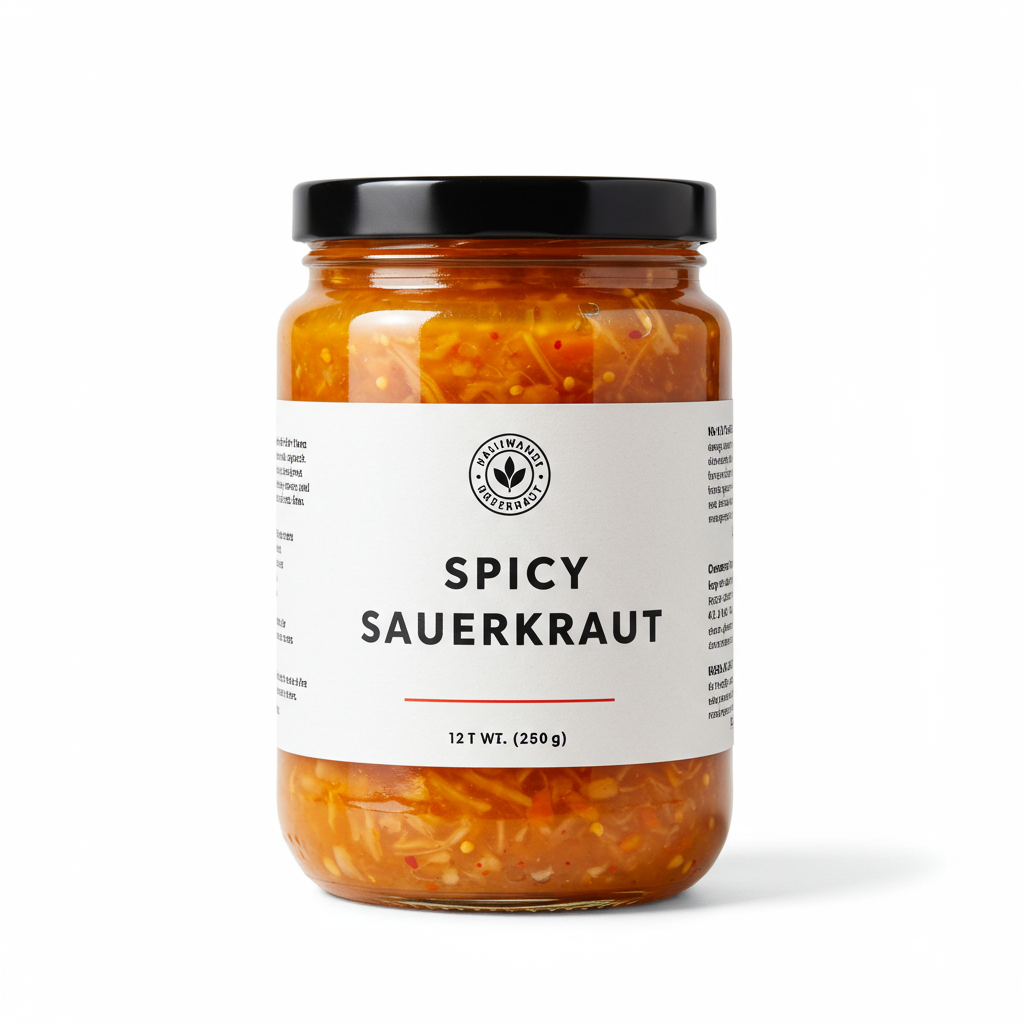
Spicy Sauerkraut
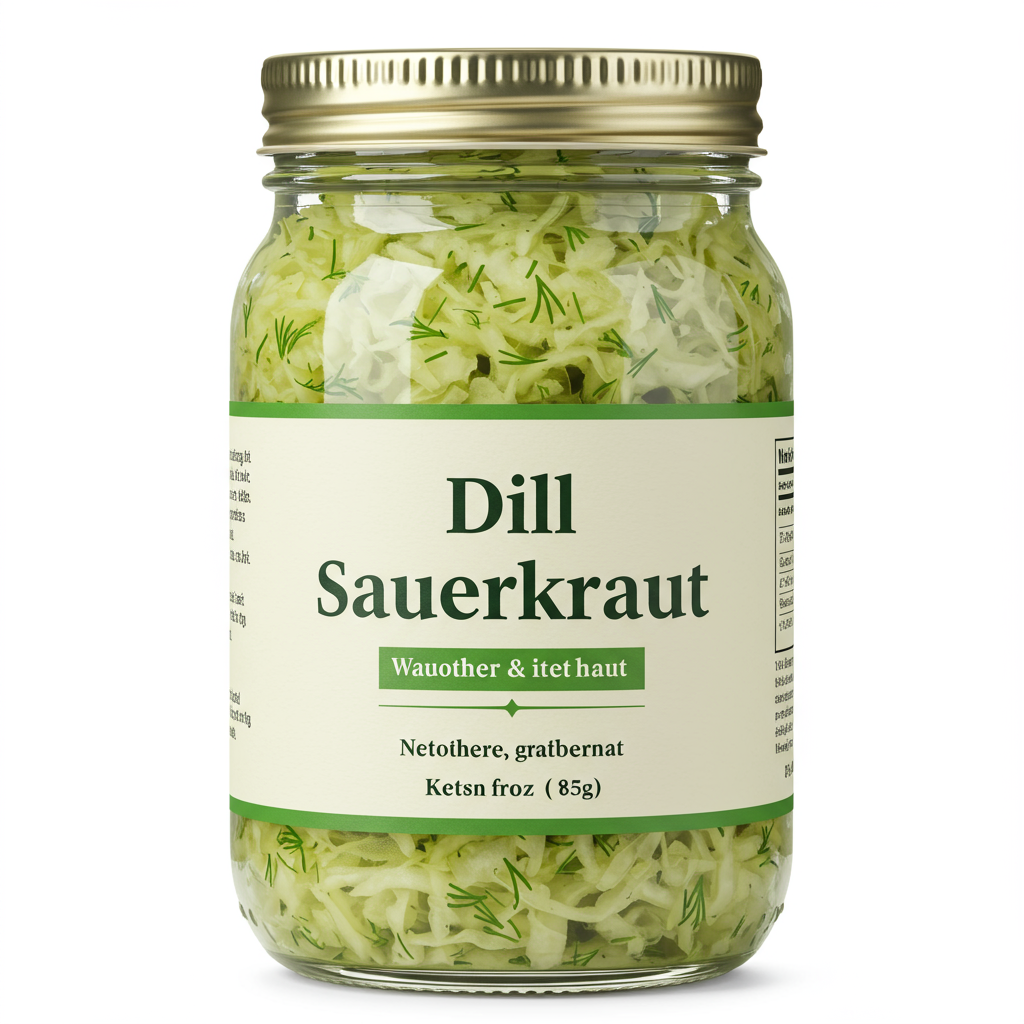
Dill Sauerkraut

Garlic Sauerkraut

Pickled Onion

Vegan Kimchi

Pickled Red Onion

Pickled Cabbage

Kimchi
See All
Health Info
Macros
6g
CARBS
0g
FAT
1g
PROTEIN
Allowed on these diets
LOW FAT
HIGH CALCIUM
VEGETARIAN
KETO
PALEO
WHOLE 30
MEDITERRANEAN
LOW CARB
VEGAN
LACTOSE FREE
GLUTEN FREE

